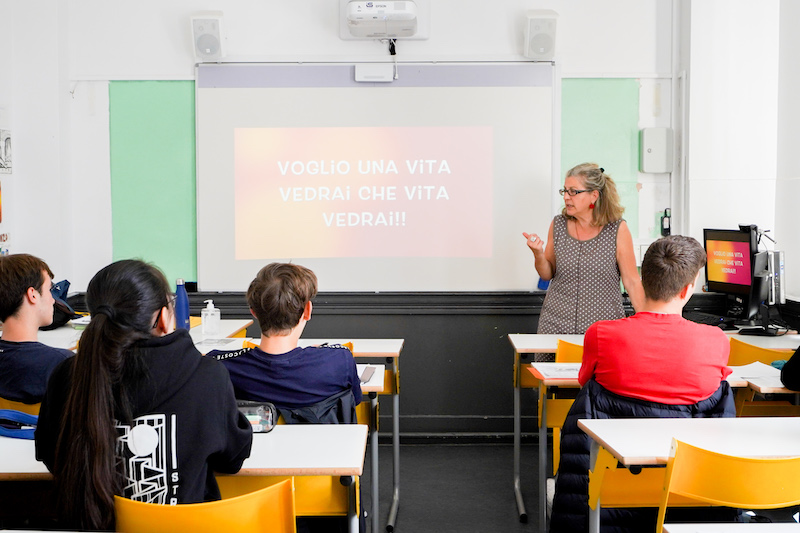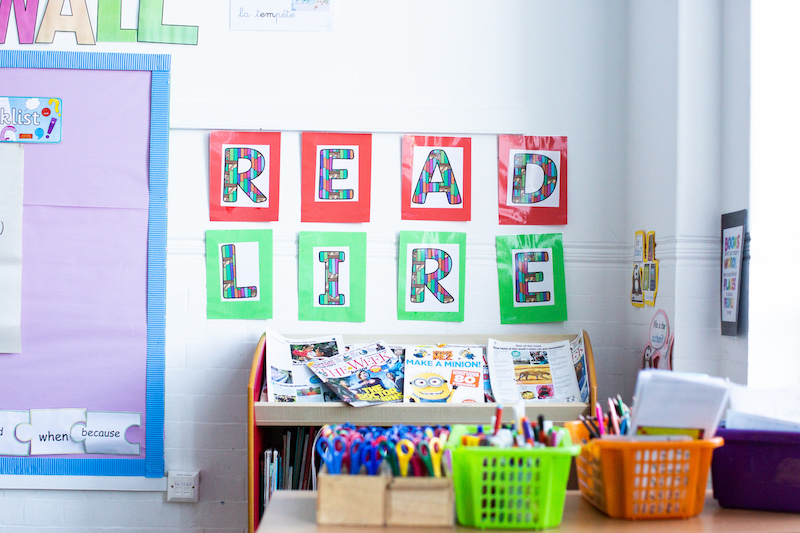The role of multilingualism in international schools
Posted on 22nd Sep 2023 in School News, International Education, Language Learning, Which London School?
Simon McNaught, Head of the British Section at Lycée Français Charles de Gaulle de Londres, considers the assets of a multilingual education.
The benefits of early exposure to bilingualism have been extensively documented: from cognitive development to cultural adaptability, including a possible way to slow down cerebral ageing, not to mention enhanced productivity and creativity.
Developing flexible brains and open-mindedness, the study and mastery of several languages give multilingual individuals a definite edge in the world. With this in mind, basing their curricula on scientific observation, tailored pedagogy and the diversity of their multinational communities, international schools often include a broad range of languages in their educational offer.
Host country and mother tongue
International schools generally have a main curriculum pertaining to their country of origin. Whether part of a government-led network, such as the Agency for French Education Abroad (AEFE – Agence pour l’Enseignement Français à l’Étranger), or simply offering education based on a national curriculum, or even schools with a fully international identity, those schools tend to have a principle language of learning, teaching and communicating. This will be taught to all pupils and complemented with at least the language of the host country, if it is different from the main one. In London, for instance, there are bilingual schools in French, German, Italian, Portuguese, Spanish, and even Mandarin or Japanese, to name a few.
Bilingual early years
It all starts from early years, generally with a bilingual stream, taught by native speakers in two languages who share either the day or the week for pupils to study all subjects alike in one language or the other. This approach simply recreates the natural circumstances in which a child acquires their parents’ native tongues: by imitation. After the early stages of strictly oral practice (using songs, nursery rhymes, storytelling, poems and teacher’s explanations for all games and activities), the fluency is then extended to the written word. At this point, pupils learn to read and write in both languages. At some schools, this is done simultaneously; at others, one language precedes the other by a few months. The objective is typically to make pupils equally proficient in the spoken and written word in both languages by the end of primary school. This does not exclude that certain schools can introduce a third language during primary education.

Modern languages at secondary level
Moving on to secondary education, now confidently bilingual, international school pupils will have the opportunity to learn other languages. The selection can be inspired by the school’s location, for example in an area close to a border. The historical heritage of the school’s environment, for example in multilingual countries, can also imbue the linguistic offer. In a globalised world, the simple goal of giving pupils an edge can encourage such schools to teach widely spoken languages (for example English, Spanish or Mandarin) and sometimes more “niche” tongues.
Multilingual school graduates
At the Lycée Français Charles de Gaulle in London for instance, pupils end up bilingual in French and English at the end of primary. When they graduate (age 18), they are also proficient in at least one of the following: Arabic, German, Italian, Spanish or Russian. The linguistic offer goes beyond modern languages and includes Ancient Greek and Latin, which pupils can add to their third language.
Some pupils follow a stream called the European Section. From Year 9, pupils can add two hours to their third language’s compulsory curriculum. In these additional hours, one allows them to discover or further their knowledge of the literature produced in that language, and one is for another subject taught in the language (science, physical education, history etc.).
This year, a cohort of students is preparing a brand new qualification: the existing International French Baccalaureate (BFI, in French) with a tweak. The original curriculum of the BFI is bilingual. At the Lycée, a few students are now following a trilingual curriculum, which includes German language and literature.
A world of opportunities
From their first day at school, these pupils become extremely flexible and adaptable. Very often, their families are globetrotters. Yet international relocations are never an issue for them regarding their child’s education, as they can easily transfer between such schools. Armed with a robust multilingual knowledge, international school graduates (with a French baccalaureate, an International Baccalaureate, International Abitur etc.) can attend almost any higher education institution worldwide. It is rather common for such students to prepare university degrees including at least a year abroad, or to spend their entire further studies in another country. As an example, the majority of London’s Lycée Français students choose to study in the United Kingdom; others go to France, the United States, Canada or Europe.
n the same vein, for their work experience and careers, these students have a truly international and mobile profile, which is in high demand by recruiters for jobs at any level.
An international alumni network
Whatever their chosen professional field, the students will have built strong connections with their classmates, most likely in various countries. This alumni network gives them precious support for career opportunities and opens up the world for them.
At a time when the British government is addressing the decline in modern languages education, international schools present a well-tried system where pupils can really become citizens of the world.
This article first appeared in the 2023/24 edition of Which London School? & the South-East, which you can read in full below: